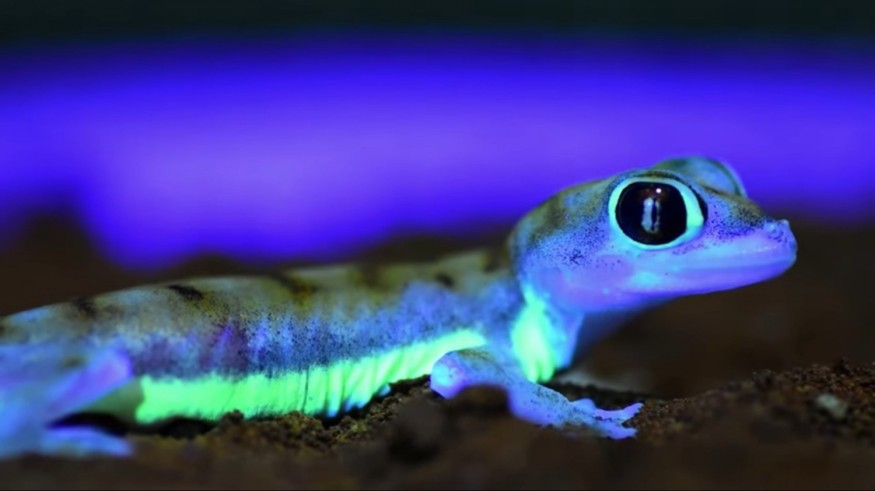Desert geckos from Namibia are found to have a brilliant neon green glow when under the moonlight, a mechanism that has never been seen on land animals with backbones before.
According to Phys.org, researchers from LMU, the Bavarian State Collection of Zoology, and Hochschule München have identified this unknown mechanism as different from the two known fluorescence that has been described from reptiles and amphibians.
Previously there was only the bone-based fluorescence under UV light and the fluorescence that occurs due to chemicals secreted and circulated in the lymphatic fluid. A 2018 study found that chameleons have bones that glow through their skin, which prompted more scientists to look for the same traits in reptiles and amphibians.
But the fluorescence in the web-footed geckos is due to skin pigment cells that make them glow under the moonlight at night, according to the study published in Scientific Reports.
"As soon as we saw this fluorescence, we realized that the web-footed geckos must use a new mechanism: the bright, neon-green fluorescence patterns were clearly produced in the skin of the lizards," explains David Prötzel, first author of the study.

Web-Footed Gecko's Skin Absorbs Moon's Bluer Light
Biofluorescence is most commonly observed among aquatic animals although there have been recent studies that it can also be found on land animals. Meanwhile, fluorescence is found in reptiles and amphibians who have the ability to absorb light and re-emit the light at a longer wavelength.
For example, web-footed geckos (Pachydactylus rangei) have translucent skin with large yellow stripes on their skin and rings surrounding their eyes. These markings absorb the moon's bluer light, which makes them glow neon green at night. Their ability to glow under the moonlight is said to be rare because they glow using skin pigment cells filled with guanine crystals.
According to Live Science, these cells are called iridophores, which have are responsible for the colors in geckos and lizards. But this discovery also proves that they make geckos glow in the dark.
Prötzel kept web-footed geckos at home and was surprised to find that his geckos glowed neon green when he shone UV light on them. They then conducted tests on 55 P. rangei specimens under UV light and found that the geckos indeed glow no matter their age and sex.
Fluorescence in Geckos
Iridophores skin pigment cells are responsible for the fluorescence in web-footed geckos. Although, it was not only until now that they become associated with the glowing trait in geckos. The web-footed geckos are the first species to have both types of iridophores, which are the one that glows and the other does not.
The study showed that the glows emitted by iridophores skin pigment cells are brighter than the fluorescence emitted by the chameleons' bones. Such brightness is visible to other geckos but would be hidden from predators with higher vantage points.
Scientists said that the markings on the web-footed geckos and its desert environment could mean that their fluorescence could play a significant role in their social interaction.
Check out more news and information on Lizards and Biofluorescence on Science Times.










